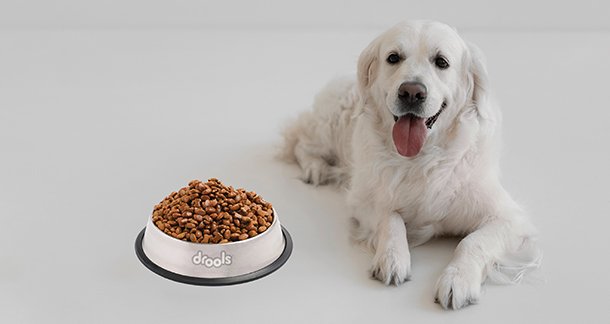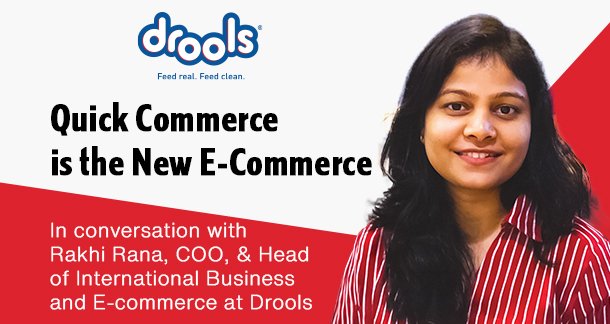In conversation with Rakhi Rana, COO, & Head of International Business and E-commerce at Drools, she shares her insights on the growing trend of quick commerce platforms in the Pet Industry.
Question- How important is the e- commerce space in the current times and what are the shifts expected in this segment?
E-commerce is well-established in India, with Flipkart leading the way nearly 17–18 years ago, and Amazon joining in 2014. In the pet care segment, e-commerce has seen tremendous growth, especially post-COVID. Before the pandemic, pet care e-commerce contributed just 10% of the market, which has now risen to 28%. The industry is expected to grow by at least 30% next year, while our own growth has been 45% annually for the past two years.
A major shift is happening with QuickCommerce, which is redefining online retail. It has pushed traditional marketplaces like Flipkart and Amazon to enter the space, with Amazon expected to launch QuickCommerce early next year. With six major QuickCommerce players emerging, the pet industry is poised for significant benefits.
While digital-first brands are often discussed, many in the pet industry have struggled to succeed. Some have thrived, but others have faced challenges, making it crucial to understand what drives success in this space.
Question– What are the things companies can keep in mind as they leverage on the e-commerce space?
When launching a website, do not limit your products to just your platform, list them on marketplaces, quick commerce platforms, and pet-centric sites to maximize visibility. Marketplaces are open to all, so ensure your presence across multiple channels.
Leverage social media and LinkedIn for brand awareness and B2B leads. Balance marketing spends across social media, marketplaces, and quick commerce to avoid your products getting lost among competitors. As a new entrepreneur, consider hiring an economical marketing agency to manage campaigns effectively.
Consistent product availability is crucial. In offline stores, sold-out items return to the same shelf position, but in e-commerce, stockouts mean lost rankings and additional marketing costs to regain visibility. I always tell my team—going out of stock online is a crime. E-commerce companies emphasize supply chain as their backbone, and as a brand, it is our responsibility to maintain stock availability for customer experience and marketing efficiency. Finally, advertising on e-commerce platforms requires strategic spending. If competitors outspend you, visibility drops, so optimize ad budgets wisely.

Question– Is there a general rule of thumb for determining marketing spend based on sales? For example, should marketing expenses be capped at a certain percentage of sales, or is there a standard ratio that can help predict sales growth based on marketing investment?
Marketing strategies depend on a brand’s stage—whether a startup, mid-size, or large. If a brand is new, an effective mix of display and search ads is recommended. Display ads help build recall, while search ads drive conversions. Premium brands should invest more in display for awareness, whereas economy brands should prioritize search ads for conversions. Initially, brands may need to allocate 25–30% of sales to marketing, which can later reduce to 10–15% once established. Over time, display spending can decrease while search ads, being ROI-driven, should be prioritized for sustained growth.
Omnichannel presence is crucial, as online sales drive offline demand. For example, Meter, an Amazon-exclusive brand, has gained traction in physical pet stores, proving that e-commerce exposure influences offline purchases. At Orange Pet Nutrition, we maintain uniform pricing across platforms, avoiding deep discounting, which ensures steady customer engagement beyond sale events. This strategy, along with operational efficiencies and platform-specific offerings like Active on Flipkart, has positioned us as the leading pet food brand on Flipkart. Our top-selling SKUs dominate the platform, thanks to 360-degree marketing, including celebrity campaigns, NGO collaborations, and educational sessions.
Quick commerce has grown rapidly, impacting traditional e-commerce giants like Amazon and Flipkart. While quick commerce offers unparalleled convenience with 7–10 minute deliveries, it often comes at a higher cost due to platform and delivery fees. Despite this, consumer preference for speed continues to drive significant growth in the segment, reshaping how brands and platforms approach online retail.
Question – Do you think speed and convenience will remain the key drivers of e-commerce and quick commerce in the future, or will intense price competition take center stage?
Quick commerce is the new face of e-commerce, and it’s here to stay. Initially, people doubted its viability, but today, we have clear evidence that it’s thriving. It has moved beyond just cross-street convenience, offering a wide range of essentials, reshaping customer behavior rather than just following it.
Think back two or three years—did we ever imagine needing something in 10 minutes? COVID may have accelerated this shift, but now it is ingrained in our habits. With Gen Z and Gen Alpha fully immersed in mobile-first shopping, quick commerce will not only sustain but continue to grow.
In the pet industry, this growth is even more pronounced. Quick commerce for pet food and supplies has surged by over 90%, outpacing even the broader e-commerce expansion. As both pet care and e-commerce boom, their intersection is creating unprecedented opportunities. However, many brands have yet to optimize for this shift, leading to limited availability on quick commerce platforms. Those who adapt quickly will have a clear advantage in this evolving landscape.

Question – Should smaller and medium-sized brands adopt a different approach or strategy to succeed in quick commerce?
Quick commerce is expanding rapidly in two key ways: increasing their reach with more cities and dark stores, and deepening their product assortment within each store. For example, the number of SKUs has doubled compared to last year and is expected to double again next year.
Platforms like Zepto are pushing this further with super stores, offering four times the assortment of their dark stores. Unlike traditional retail, quick commerce actively experiments with D2C and niche brands, making them available even where they lack offline presence. This creates opportunities for emerging brands with strong product differentiation.
Many customers, including myself, turn to quick commerce for exclusive brands like Country Delight, Alicia’s, and Akshay Kalpa—products not easily found in local stores. This exclusivity serves as a strong customer hook, driving loyalty and repeat purchases.
Question- What were your major highlights in 2024, particularly for this domain?
We have seen rapid growth in quick commerce, with our market share continuously expanding. Next year will be even bigger as we introduce cat wet food and an extensive range of dog and cat treats, further accelerating our growth.
We have also achieved major milestones—becoming the No. 1 pet brand on Flipkart and maintaining a consistent pricing and communication strategy across online and offline channels. This approach has helped us avoid deep discounting pitfalls and build trust across all sales channels.
On the international front, we officially launched in Dubai, making Drools a true MNC. With a dedicated team, our own warehouse, and a strong presence in offline stores, modern trade, and e-commerce platforms like Noon and Amazon UAE, we are steadily expanding. Southeast Asia is also growing well, and markets like Israel and Palestine are rebounding.
While we are present in 22+ countries, our strategy now focuses on seven key markets where we can replicate India’s best practices. We will soon dive deeper into our international expansion journey, sharing insights for brands looking to enter global markets.

